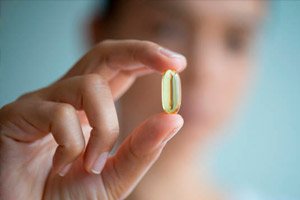
All iLive content is medically reviewed or fact checked to ensure as much factual accuracy as possible.
We have strict sourcing guidelines and only link to reputable media sites, academic research institutions and, whenever possible, medically peer reviewed studies. Note that the numbers in parentheses ([1], [2], etc.) are clickable links to these studies.
If you feel that any of our content is inaccurate, out-of-date, or otherwise questionable, please select it and press Ctrl + Enter.
A new study shows that omega-3 fatty acids significantly reduce acne
Last reviewed: 02.07.2025

Omega-3 fatty acids (ω-3 FAs), such as eicosapentaenoic acid (EPA) and docosahexaenoic acid (DHA), are essential fatty acids with anti-inflammatory effects. A recent study published in The Journal of Cosmetic Dermatology examines the effectiveness of ω-3 FAs in the treatment of acne.
Ultra-processed foods rich in refined sugars, dairy, and saturated fats can cause excess sebum production and excessive keratin accumulation in the hair follicles of the dermis. Inflammation and bacterial colonization of the follicles can trigger or worsen acne.
Dietary interventions to modulate acne frequency and severity have not been fully studied. However, the anti-inflammatory activity of ω-3 FAs makes them promising dietary components to explore for their therapeutic potential against acne.
Alpha-linolenic acid (ALA) is an essential fatty acid that cannot be synthesized endogenously in humans, despite its importance in digestion. EPA and DHA are synthesized in small amounts from ALA; therefore, ALA, EPA, and DHA must be consumed in adequate amounts to maintain healthy levels.
Modern Western diets often promote inflammation because they contain up to 20 times more pro-inflammatory ω-6 fatty acids compared to anti-inflammatory ω-3 fatty acids. Restoring this balance is essential to reducing inflammation.
As a result, many enzymes that affect acne are affected by ω-3 FA. With the addition of ω-3 FA, it is possible to achieve a decrease in sebum synthesis, levels of inflammatory cytokines and the acne-causing follicular bacterium Corynebacterium acnes, as well as improved skin integrity and increased antioxidant function.
The present study was motivated by the need to provide more direct evidence that ω-3 FAs can reduce acne. The study included 60 patients with an average age of 26 years who were not taking any prescription acne medications.
Thirty-seven study participants had papulopustular acne (AP) and 23 had comedonal acne (AC). About 64% of study participants were dissatisfied with their improvement from previous treatment or its side effects.
All study participants were encouraged to consume a Mediterranean diet, including supplementation with omega-3 fatty acids from algae. Each patient received oral supplements containing 600 mg DHA/300 mg EPA for the first eight weeks of the intervention, followed by 800 mg DHA/400 mg EPA for the next eight weeks.
Participants attended four visits to monitor blood levels of EPA, DHA, and ALA, and to calculate the HS-omega-3 index. The target index value was 8 to 11%, with values below 8% and 4% indicating deficiency and severe deficiency, respectively. These values were compared with responses to standardized questionnaires and clinical data.
At baseline, more than 98% of patients were EPA/DHA deficient, of which 40 and 18 were severely deficient and deficient, respectively.
At the baseline visit (V1), the average HS-omega-3 index was 5%. By the fourth visit (V4), it had improved significantly to 8%. However, one of the 18 participants remained in severe deficiency and deficiency, respectively.
Both inflammatory and noninflammatory lesions decreased throughout the study period. By the end of the study, 42 patients had AC and 11 had AP, compared with 23 and 37 in V1, respectively.
At baseline, 32 patients had moderate acne and 29 had mild acne. By V4, 45 had mild acne and eight had moderate acne, with two patients having no noninflammatory lesions at V4. Additionally, 42 reported fewer than ten noninflammatory lesions compared to eight patients at baseline.
One patient reported 26-50 lesions by V4 compared to 20 patients at baseline. Between V1 and V4, 27 and eight patients reported 10-25 lesions at V1, respectively.
Complete clearance of inflammatory acne was observed in 13 patients at V4, while 33 had fewer than ten lesions compared to 23 at V1. There was a significant decrease in the number of people reporting 10-20 lesions, from 28 at V1 to seven at V4. No patient had more than 20 lesions at the end of the study, compared to nine at baseline.
While nearly 80% of study participants reported improvement in their acne, 8% of patients felt it worsened. Overall, patients reported better quality of life despite persistent acne, with these improvements particularly noticeable in the AP group, which experienced the most significant change in the HS-omega-3 index.
Perceptions of food triggers had a greater impact on acne occurrence and flare-ups than foods such as nuts, fruits, vegetables, and whole grains, which were considered healthy. Some foods such as milk, French fries, and chips were consumed more frequently in the AP group compared to the AC group. Most patients reduced their dairy intake during the study period.
Although the present prospective study did not use a control group, the majority of acne patients had omega-3 FA deficiency. These results are similar to previous reports, in which HS-omega-3 index values were below 5.5% and 8% in German and European studies, respectively.
These deficiencies can be corrected by consuming a Mediterranean diet supplemented with ω-3 FA from algae. By restoring ω-3 FA deficiency through supplementation and dietary interventions, most patients in the present study experienced significant improvement in acne severity. The safety, acceptability, and quality of life improvements of this treatment approach support its potential role as an intervention alone or in combination with prescription medications.
